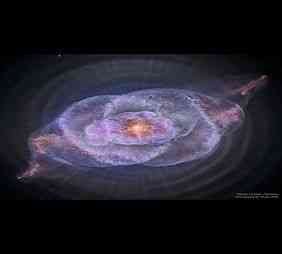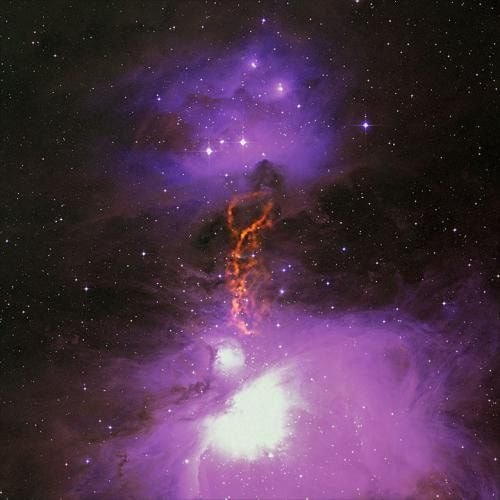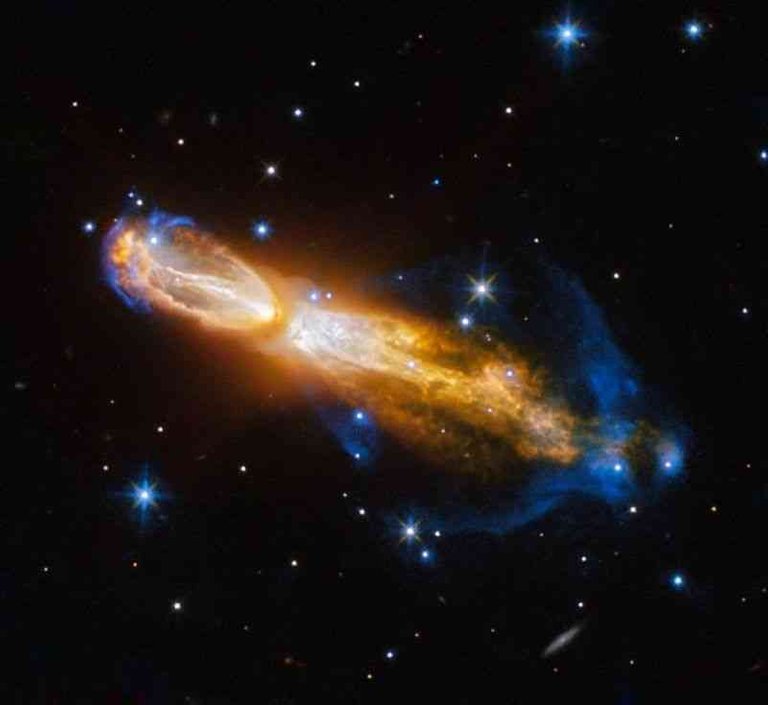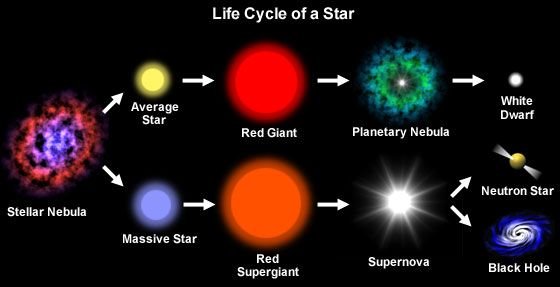The Sun: A Life Story
[ 6 min read ]
Do some people wonder how the sun is burning without oxygen in space ?! The sun’s combustion is the wrong term The answer is that the sun does not burn. If the sun were shrinking or burning, it would have run out of fuel before we came here ..... So how does the sun work?
How does the sun produce its energy? What does this process involve? After the energy has been produced, how is it preserved to reach the Earth and supply it with the heat needed to continue life?
The answer is simply that the sun - and all the other stars in the universe - produce its energy with nuclear fusion reactions.

But this does not seem to be a clear answer if you are not aware of how stars are forming and the process of nuclear fusion. Want to know how actually this works? Read out the rest of the article.
Scientists explain the process of generating stars to return to how they originated, which leads us to (nebula theory). This theory states that the nuclear reaction within a star begins when a cloud of gas and particles - known as
"nebulae" - collapses under the influence of the pressure caused by its gravity, and this collapse generates a large ball of light in the interstellar system, then the atoms begin to fuse under the influence High pressure and heat. "
For the sun and its like stars, energy is produced when hydrogen atoms (H) merge into helium atoms (He), and all the materials produced during fusion are not preserved, as some of them are converted into photons, but how much energy does our sun produce?

The solar material is formed as hydrogen gas (92.19 percent). However, these persons are stars. The sun spends its life producing helium starting with the coherence of hydrogen molecules. Here we mention the other elements that enter the composition of the solar material, albeit in small quantities, which are oxygen, sulfur, carbon, and iron.
Our sun merges about 620 million tons of hydrogen per second, and this means that per second, it produces enough energy for New York City for 100 years.
Ain't that amazing?
The temperature and pressure are higher within the larger stars, so they merge heavier elements, and because the elements that these stars merge are heavier, they release more of the more materials, which generate more heat and pressure.
How does its energy reach the Earth?
The process of merging atoms with nuclear fusion is called (nuclear fusion). This process liberates huge amounts of energy in the form of light and heat. It is worth noting that the layers of the sun play an important role in distributing solar energy in a way that ensures the continuity of life on our planet.
99% of the sun's energy is produced inside its nucleus, while the nuclear fusion process stops outside the nucleus, while the rest of the sun's layers are heated by the energy released from the nucleus, and eventually, the released energy reaches the outer layers and then goes through space in the form of light or energy particles.

The other layers of the sun are called the (radiation region), the (convection zone), (image range), and the temperature coordination of the layers as they move away from the center of the sun, as most nuclear fusion operations do not occur, yet they facilitate a transition to outer space.
When this heat and energy reaches the Earth, the ozone layer in the Earth's atmosphere blocks a large portion of the ultraviolet rays coming from the sun and allows some of them to pass, and this energy is necessary for life on our planet.
"The energy it produces every second is equivalent to the power of the Hiroshima bomb multiplied by five million times."
Stages of sun formation (the star)
Star formation stage:
About five billion years ago, a cloud of gas and dust formed, left behind by stars in space. This stellar cloud lasted for a million years, cooling and contracting under the influence of its increasing weight. Currently, the pressure from its massive masses has increased, its temperature has risen to thousands of degrees Celsius. This is how a "Jenin" formed a star, which shone a bright light in the sky.
 Cat's Eye Nebula ,the first beginning to be the star
Cat's Eye Nebula ,the first beginning to be the star
The birth of a star: More than 4.56 billion years ago, our star began to spin, throwing the material from which the planets would form later, including our Earth. After millions of years, the star’s heat used several millions of degrees Celsius, so that the process of melting the atomic nuclei and the birth of the sun begins.
 The birth of a star
The birth of a star
Maturity: 4.56 billion years ago, the sun lives as a star in space. It burns the hydrogen that makes up 92.19 percent of it, to analyze helium gas, illuminating the planets around it that form the solar system, and allowing life to flourish on Earth.
Aging: Within five billion years from now, the sun will deplete its stock of hydrogen gas, which may have been entirely converted to helium. Our sun will then expand into space, approaching Jupiter, Venus, and possibly our Earth. And its temperature decreases to move to the red giant stage.
Death of a star: After millions of years after the end of the aging stage, the helium melting process will begin, so the sun’s heart will expand again and divide a maximum into two parts, and the outer layers will be separated from each other and the center and from to form a planetary nebula or a cloud of gas and dust, while its heart becomes a white dwarf After it cools down.
 Death of a star
Death of a star
"The sun is a hellish machine of energy production"
The power of the atomic bomb of Hiroshima, multiplied by five million times, is equivalent to the energy that our sun empties without interruption, every second of time. A real nuclear reactor This fireball, which does not stop producing enormous energy that takes the form of light or heat, or particles of "matter" (helium nuclei, electrons, and protons), some of which reach the Earth.
The future of the sun
The sun is about 4.5 billion years old. Its magnitude is the balance between external pressure (resulting from nuclear fusion and released energy) and internal gravity. In 4.5 billion years, the Sun’s size will be 6 percent larger, and it has about 5 to 5.5 billion years of energy inside it to continue nuclear fusion. During this time, the sun will rise again.
When the nucleus becomes dried, the star eventually bends and shrinks under the weight of the lumbar spine. However, hydrogen still chemically reacts in the upper layers. Its heat will be transferred to the upper layers, so the radius of the sun and the outer layers increase so that the star turns into a red giant.
 Life cycle of a star
Life cycle of a star
The red giant's radius is 100 times the current radius of the sun. Indeed, our giant red star devours and evaporates Earth. After this happens, the nucleus becomes hot until helium becomes carbon. When helium is finished, the heart expands and cools, but the upper layers still dispose of the material.
Finally, the star's core cools, cools, and turns into a white dwarf. The white dwarf does not last long and gives way to the black dwarf, which is almost impossible to see. This process takes approximately several billion years.
utopiaeducators.com
Thanks
Warning! This user is on our black list, likely as a known plagiarist, spammer or ID thief. Please be cautious with this post!
If you believe this is an error, please chat with us in the #appeals channel in our discord.